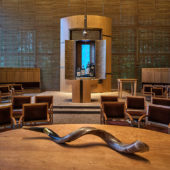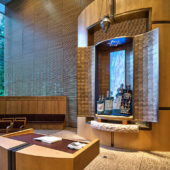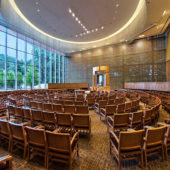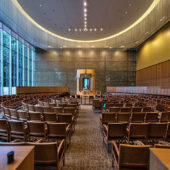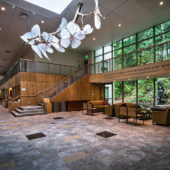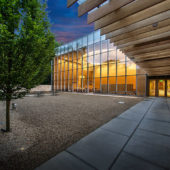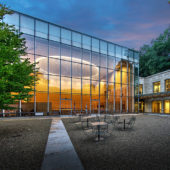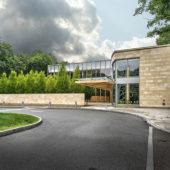Located in a suburb of Boston, described by a noted architectural critic as “A temple, a masterwork”.
The origin of Temple Beth Elohim was the formation of the Jewish Women’s Community Group of Wellesley in 1949. A year later men became active members and the group shortened its name to Jewish Community Group. For seven years the group grew, meeting in a variety of temporary spaces and in 1957 purchased eight acres. The next year, the members voted to be part of the Reform movement and named their soon to be built temple, “Beth Elohim,” which means “House of God.” Construction of a synagogue began in 1960 and amazingly was completed in time for High Hoy Day services that same year. After years of continued growth ground was broken on the same site in 2009 for a new synagogue designed by William Rawn & Associates of Boston.
When Beth Elohim’s new synagogue was completed in 2011 Robert Campbell, architectural critic of the Boston Globe wrote it is “the best new house of worship to have been built in the Boston area in decades” and characterized it as “a temple, a masterwork”. An article in The Architectural Record magazine said “Awe is a concept central to Judaism, and awe is the feeling you get as you enter Temple Beth Elohim, a Reform synagogue in Wellesley, Massachusetts”. The 36 foot tall windows in the sanctuary, warm-toned wood contrasted against pale Jerusalem stone contribute to that awe.
The architect, William Rawn, is best known for his Seiji Ozawa Hall at Tanglewood and his public library in Cambridge. In the sanctuary of the 42,000 square foot building, a trellised glass backdrop to the altar connects the congregation with the natural world. A stunning suspended sculpture named Jubilee greets the visitor in the synagogue’s entry atrium. Jubilee is based on the almond blossom which holds meaning in Judaism appearing many times in Jewish scriptures.

